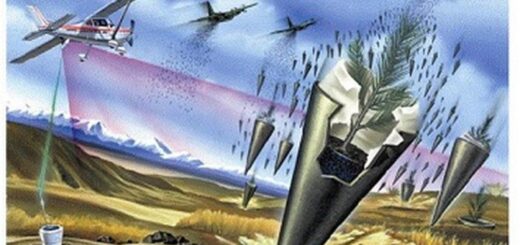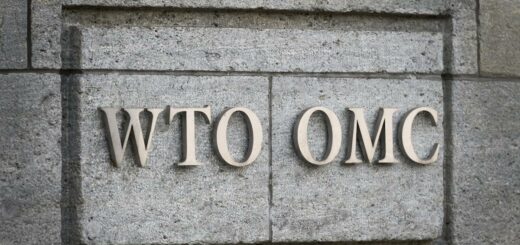National Current Affairs – UPSC/IAS Exams- 19th June 2019
World Population Prospects 2019 report
Topic: Population Geography
In News: India is set to overtake China as the most populous country by 2027 and will have almost 1.64 billion inhabitants by 2050, says a United Nations report, adding that South Asia’s opportunity to reap the “demographic dividend” will peak by 2047.
More on the Topic:
- Globally, people aged above 65 are the fastest growing age group, putting pressure on social protection systems as the proportion of the working-age population shrinks.
- The rate of population growth is the highest in sub-Saharan Africa, where the fertility rate stand at 4.6 births per woman over a lifetime.
- The region is expected to double its population by mid-century. Nigeria is expected to add 200 million people over the next three decades and overtake the U.S. to become the third most populous nation.
- Moving from geographical areas to age cohorts, India is still among the countries where the working-age population (25-64 years) is growing faster than other groups, creating an opportunity for accelerated economic growth.
- However, the “demographic dividend” will peak by 2047 in the region, meaning that countries such as India must rush to invest in education and health, especially for young people, the report says.
- Globally, it’s the post-working-age group that is growing the fastest. By 2050, one in six people will be above 65, compared with one in 11 people in 2019. In 2018, for the first time in history, people above 65 outnumbered children under five years of age. By 2050, the number of people over 80 is expected to triple to 426 million.
- This trend has also led to falling proportions of working-age people to support an ageing population. By 2050, almost 50 countries are expected to have less than two working-age people to support every person above 65.
Impact of ageing:
- These low values underscore the potential impact of population ageing on the labour market and economic performance as well as the fiscal pressures that many countries will face in the coming decades as they seek to build and maintain public systems of health care, pensions and social protection for older persons.
Source: The Hindu
Educational norms for drivers
Topic: Polity and Governance
In News: The government is likely to waive mandatory educational qualification for truckers and bus drivers for seeking a driver’s licence in what it says is an attempt to provide employment opportunities.
More on the Topic:
- Under Rule 8 of the Central Motor Vehicle Rules, 1989, a transport vehicle driver needs to have passed class 8.
- The Ministry of Road Transport and Highways said that it would amend this rule and issue a draft notification shortly for comments from stakeholders.
- “The removal of this requirement will open up employment opportunities for a large number of unemployed persons, especially the youth,”
- The move would help meet the shortage of 22 lakh drivers in the transport and logistics sector.
- The relaxation is applicable for drivers of medium and heavy transport vehicles, which include trucks as well as State transport, school and private buses.
Source: The Hindu
Draft e commerce policy
Topic: Economy
In News: Some of the companies raised concerns about the draft e-commerce policy released by the government, especially provisions related to treatment of data.
More on the topic:
- E-commerce companies voiced their concerns about the Reserve Bank of India’s data localisation norms with Commerce Minister Piyush Goyal.
- The other issue was the government’s demand for data from companies, where the companies argued that the data should be shared only for law and order and investigation situations.
About draft e-commerce policy:
Key features of the draft:
- Indian Control Over Data: Govt to be given access to source code, algorithms of AI systems Impose custom duties on electronic transmissions to reduce revenue loss. It bars sharing of sensitive data of Indian users with third party entities, even with consent.A ‘data authority‘ to look at community data.
- Local Presence For Apps & Websites: All ecommerce websites, apps available for downloading in India to have a registered business entity here. Non-compliant ecommerce app/website to be denied access here.
- Incentives For Data Localisation: Location of the computing facilities like data centres, server farms within India. Firms to get 3 years to comply with local data storage requirements.Data storage facilities to get ‘infrastructure status’.
- Fdi In Ecomm: FDI only in marketplace model. No FDI in inventory model.
According to the FDI policy guideline, “Marketplace model of e-commerce means providing of an information technology platform by an e-commerce entity on a digital and electronic network to act as a facilitator between buyer and seller.”
According to the FDI policy, “Inventory model of ecommerce means an ecommerce activity where inventory of goods and services is owned by e-commerce entity and is sold to the consumers directly.”
- Ecommerce Trade: Curbs on Chinese ecommerce exports. Gifting route, often used by Chinese apps, websites, banned for all parcels except life-saving drugs. Integrating Customs, RBI and India Post to improve tacking of imports through ecommerce.
- Incentives & e-commerce export promotions.Ecommerce startups may get ‘infant industry’ status raising limit for courier shipments from Rs 25,000 to boost ecommerce export.
- Regualtion: No separate regulator for ecommerce sector.E-consumer courts to be developed.
Model Mains Question: Discuss the concerns associated with draft e- commerce policy and suggest solutions.
Source: The Hindu
Operation Sun Rise
Topic: International Relations
In News: “Operation Sunrise 2” is a coordinated operation by armies of India and Myanmar. It is a three-week-long operation carried out in their respective border areas, targeting several militant groups operating in Manipur, Nagaland and Assam.
More on the Topic:
- The first phase of “Operation Sunrise” was conducted three months ago along the Indo-Myanmar border, during which, the Indian Army targeted members of the Arakan Army, an insurgent group in Myanmar, who were opposed to the Kaladan multi-modal transit transport project. The project is viewed as India’s gateway to Southeast Asia.
- In “Operation Sunrise 2”, the armies coordinated with each other to bust camps of militant outfits, including the Kamtapur Liberation Organisation, the National Socialist Council of Nagaland(Khaplang), the United Liberation Front of Assam (I) and the National Democratic Front of Boroland.
- Myanmar is one of the strategic neighbours of India and shares a 1,640-km border with a number of north-eastern states, including the militancy-hit Nagaland and Manipur.
About Kaladan Multimodel Project:
- The Kaladan project connects Sittwe Port in Myanmar to the India-Myanmar border.
- The project was jointly initiated by India and Myanmar to create a multi-modal platform for cargo shipments from the eastern ports to Myanmar and to the North-eastern parts of the country through Myanmar.
- It is expected to open up sea routes and promote economic development in the North-eastern states, and also add value to the economic, commercial and strategic ties between India and Myanmar.
- This project will reduce distance from Kolkata to Sittwe by approximately 1328 km and will reduce the need to transport good through the narrow Siliguri corridor, also known as Chicken’s Neck.
Source: The Hindu
Dead zone
Topic: Environment and Ecology
In News: Scientists from the National Oceanic and Atmospheric Administration and Louisiana State University have predicted that this spring’s record rainfall would produce one of the largest-ever “dead zones” in the Gulf of Mexico.
More on the Topic:
- Each summer for at least the past 35 years, part of the Gulf of Mexico dies. That’s because the Mississippi River drains a massive swathe of the Midwest, Great Plains, and southeastern United States and transports tons of excess fertilizers and nutrients into the Gulf, leading to a massive dead zone.
- This year, as record spring floods flush even more pollutants into the river, the hypoxic zone is forecast to be one of the worst ever, maxing out at around 8,000 square miles.
- While agricultural fertilizers, usually forms of nitrogen and phosphorous, can be toxic to fish and aquatic wildlife on their own, that’s not what causes the dead zone in the Gulf. Instead, it’s caused by a process called eutrophication.
Eutrophication:
- When excess nutrients are flushed into the warm waters, they cause large algae blooms, some of which can be toxic.
- Those mats of algae also block sunlight from reaching into the sea. But the big problem comes when all that algae dies.
- The process of decomposition sucks almost all of the dissolved oxygen out of the water near the bottom, leading to large-scale hypoxic zones(oxygen defieciency) where fish, shrimp, and other creatures cannot live. Those that can swim or skitter away do, and those that can’t suffocate.
Source: The Hindu
Pradhan Mantri Janaushadhi Pariyojana (PMBJP).
Topic: Government Policies
In News: A The Bureau of Pharma PSUs of India (BPPI) has found 25 batches of drugs of 18 pharmaceutical companies to be of substandard quality since January 2018.BPPI implements the Centre’s flagship affordable medicine scheme Pradhan Mantri Janaushadhi Pariyojana (PMBJP).
More on the Topic:
- ‘Pradhan Mantri Bhartiya Janaushadhi Pariyojana’ is a campaign launched by the Department of Pharmaceuticals, Govt. Of India, to provide quality medicines at affordable prices to the masses through special kendra’s known as Pradhan Mantri Bhartiya Jan Aushadhi Kendra.
- Pradhan Mantri Bhartiya Jan Aushadhi Kendra (PMBJK) have been set up to provide generic drugs, which are available at lesser prices but are equivalent in quality and efficacy as expensive branded drugs.
- Bureau of Pharma PSUs of India (BPPI) is the implementing agency of PMBJP. BPPI (Bureau of Pharma Public Sector Undertakings of India) has been established under the Department of Pharmaceuticals, Govt. of India, with the support of all the CPSUs.
- With developments like more and more doctors prescribing generic medicines and opening of over 5050 Janaushadhi stores across 652 districts, awareness and availability of high quality affordable generic medicines has increased in the country.
- About 10-15 lakh people benefit from Janaushadhi medicines per day and the market share of generic medicines has grown over three fold from 2% to 7%in last 3 years.
- The Janaushadhi medicines have played a big role in bringing down the out of pocket expenditure of patients suffering from life threatening diseases in India.
Source: The Hindu
Co2 Emissions of Bitcoins
Topic: Environment and Ecology
In News: According to recent studies it is found that the use of Bitcoin, a popular virtual currency emits over 22 megatons of carbon dioxide annually.
More on the Topic:
- For a Bitcoin transfer to be executed and validated, a mathematical puzzle must be solved by an arbitrary computer in the global Bitcoin network.
- The network, which anyone can join, rewards the puzzle solvers in Bitcoin.
- The computing capacity used in this process known as Bitcoin mining has increased rapidly in recent years.
- The power consumption of hardware behind the bitcoin network is about 46 TWh (Terra Watts).
Source: The Hindu




















